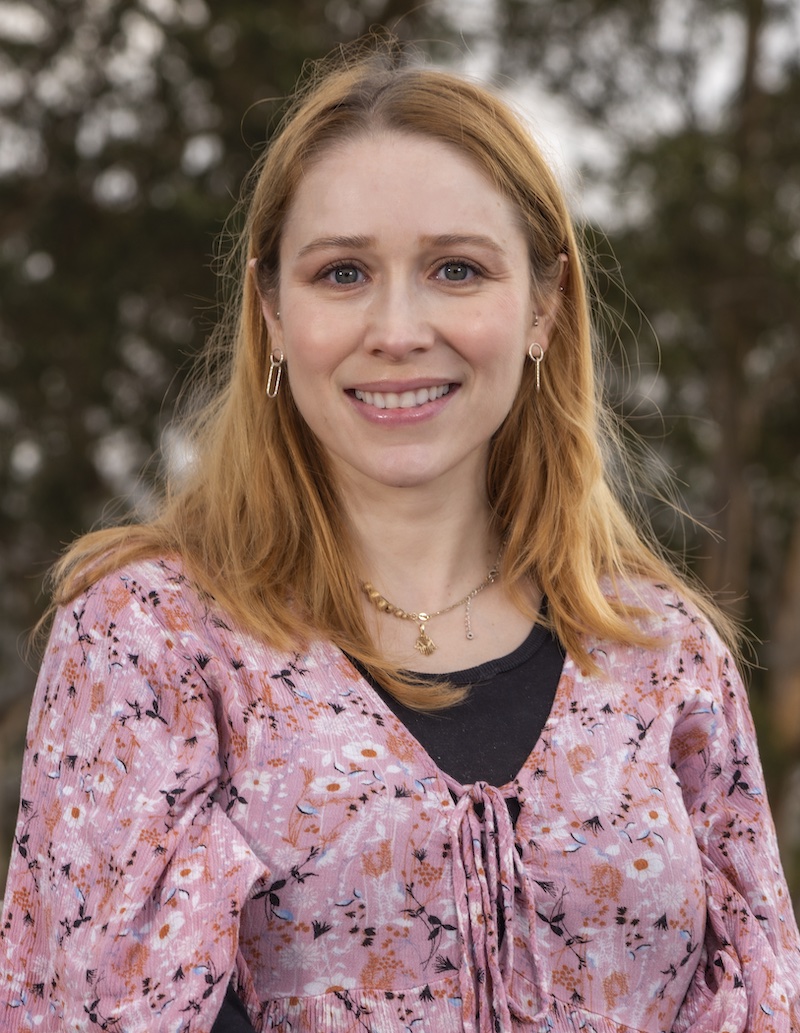
Inna Vishik began using synchrotrons in graduate school and conducts even more synchrotron research as a professor. As chair of the UEC, she is working to enhance accessibility to this facility—and has suggestions for fun things to do after beamtime, too!
What is your role, and how do you use the ALS?
I’m an associate professor of physics and astronomy at UC Davis. My group studies emergent electronic phenomena in quantum materials, primarily using photoemission. Photoemission can tell you about the chemical composition of materials, how the atoms are bonded, and also how electrons move around in those materials. This information explains why materials behave the way they do.
Quantum materials are characterized by the theme of emergence, the idea that the behavior of one electron in a solid might be different from collective behaviors that you can get when you have many electrons. In consequence, quantum materials often give us surprises. We might come into an experiment with a hypothesis, and oftentimes nature shows us something completely different, which is a lot of fun and it can be discovered with the powerful types of experiments that are possible at the ALS.
I’ve come to rely on synchrotrons quite a bit, because the types of scientific questions we ask, and the fact that we look at so many different materials, really necessitate some unique capabilities that are only found at synchrotrons, such as the tunable energy of the light, a small beam spot size, or a more automated and higher throughput experiment.
How did you become interested in physics?
I’ve been interested in science from a young age. Being a mom now, I can see that all kids are kind of natural scientists, but I first became interested in physics in high school. The original instructor for the course vanished somehow, and the only person with the proper expertise happened to have an advanced degree in physics. So, he took over the course, and he was very knowledgeable about the subject, very engaging. So, that really made me fall in love with physics.
Early on in undergrad, I kind of converged on condensed matter or materials physics as the subfield that I was really fascinated with. I really love tangible things: being able to understand the immediate world around me and how it works. Really, nothing is more tangible than holding a crystal in your hand one day and then understanding its internal microscopic crystal, magnetic, or electronic structure the next day.
What inspired you to become more involved in the user community?
Synchrotrons are among the most productive but underappreciated or unknown big science endeavors. The ALS doesn’t operate just one or two experiments; it simultaneously operates tens of experiments spanning almost every field of science and engineering, and some humanities topics as well.
I became interested in contributing more to the user community and communication between users and management, as well as understanding how the facility is run.
The buildup of ALS-U is already well underway, but the ALS itself continues to operate. So, it’s an exciting time to be a user and a member of the UEC because there’s these imminent new capabilities, but it’s also a critical time for communication between the user community, management, and all the other stakeholders because there are very important and big changes coming down the pipeline.
Can you give a preview of some of the UEC activities coming up?
After ALS-U, many of the present experiments at ALS will be different. There will be a number of user forums for different beamlines and techniques that will be strongly affected by the upgrade. So, that’s something that the user community should look out for.
We’ll be returning to an in-person User Meeting for the first time in years. It’ll be great to recover these face-to-face interactions between researchers. The UEC has been championing enhancing education and accessibility related to synchrotron research. I’ve been a co-organizer of the Light Sources 101 tutorial for the past few years, and we have added a component to guide new users in the competitive beamtime proposal process, hoping new users can be brought into the fold more effectively. There are also efforts underway involving the UEC and other stakeholders to make the beamtime proposal review process more equitable.
What kinds of inclusion, diversity, equity, and accountability (IDEA) efforts are you involved in?
The University of California system is a tremendous vehicle for upward mobility. Across all our campuses, many students come from underprivileged backgrounds, many are minorities, many are non-traditional students. They graduate from the universities into very fulfilling or lucrative careers. This track record of upward mobility is something that I’m really proud to be a part of as a faculty member at UC Davis. The very life experiences that they bring to the table enrich the entire university community, and in my own research group, I’ve had the opportunity to work with a diverse group of individuals.
What do you like to do in your free time?
I don’t necessarily have free time, but when I’m not working, I’m spending time with my daughter, and what we really like to do is explore the Bay Area. I’ve lived here for most of my adult life, and it never gets old. We love to go out in nature and do hikes. We love urban adventures, museums, restaurants, kind of everything the area has to offer. If anyone has an extra day in the area before or after experiments, you can reach out to me and I can give some suggestions of fun things to do around here.